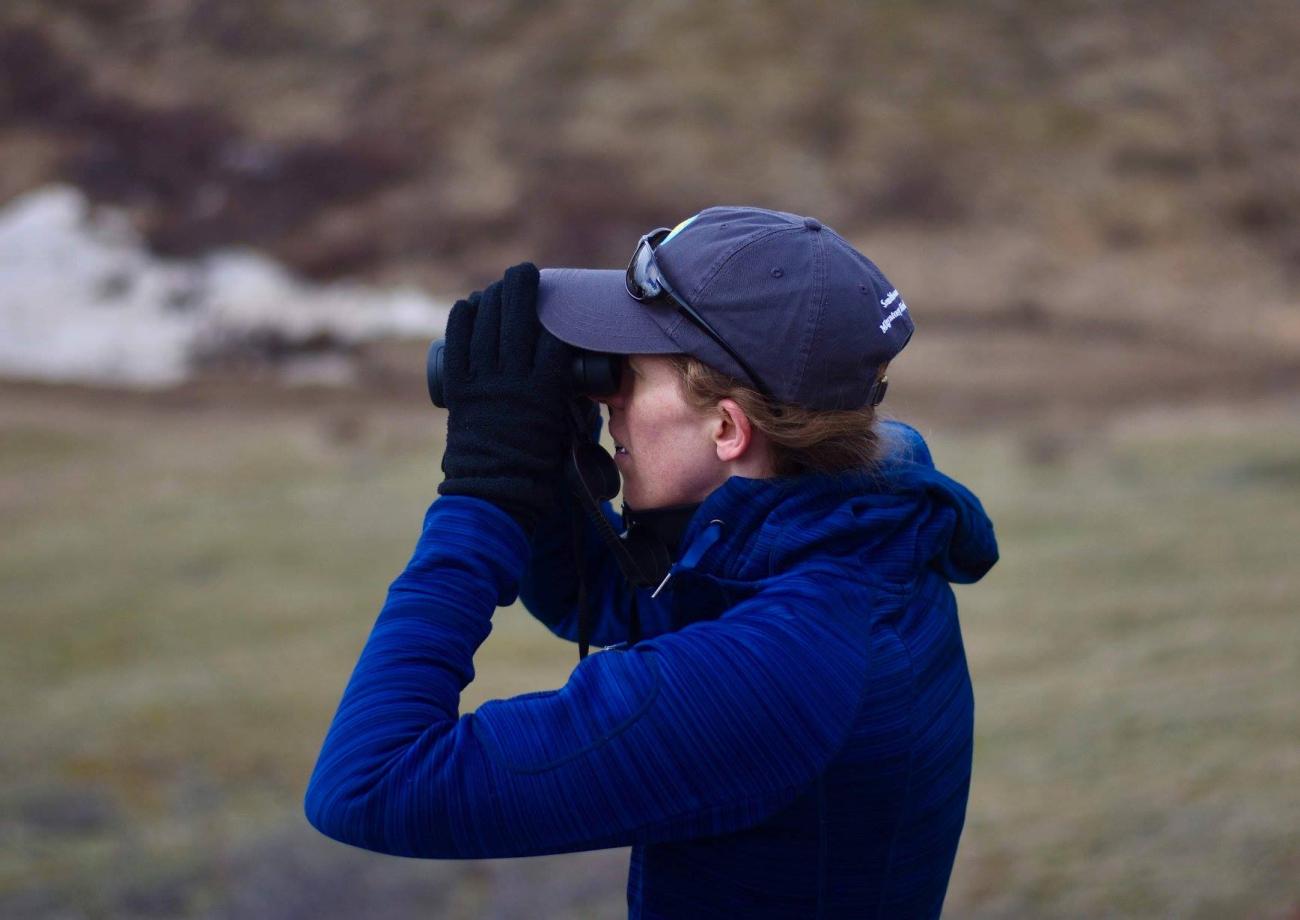Assistant Professor of Biology Melinda Fowler, PhD travels to Alaska with the Smithsonian's Migratory Connectivity Project

We have been following along with Assistant Professor of Biology Melinda Fowler, PhD, who is traveling to Alaska alongside Smithsonian Conservation Biology Institute, Migratory Bird Center MCP Program Manager and Research Ecologist Dr. Autumn-Lynn Harrison. From June 14 through July 6, these scientists will be completing research and tagging birds for the Smithsonian’s Migratory Connectivity Project. While there, Melinda hopes to also collect blood samples from the birds for further physiological research.
Starting for a week in Denali National Park, they will then travel to Anchorage for a few days, followed by a two week trip to the Alaska North Slope. Below, you'll find the first post from Melinda's blog, chronicling her experience so far.
As her trip continues, she will share more of her experiences. You can follow along through her blog, Migratory Seabird Research.
July 2, 2018 - We have moved field sites. We finished with tagging Long-tailed Jaegers in Denali and have flown up to the North Slope of Alaska. We are operating out of the ConocoPhillips Alpine Unit on the Colville River Delta, just south of the northern coast of Alaska near the Beaufort Sea. ConocoPhillips has supported the tagging research done by the Migratory Connectivity Project. We are joined by Ellie Heywood, a research associate at Duke Marine Lab, who is also studying migratory connectivity. We are in coastal tundra now, and the birds nest in very damp, spongy habitat. It is a very late spring and there is still quite a bit of ice on the freshwater ponds.
We are looking for Arctic Terns, the world record holder for migration. Arctic Terns migrate from northern latitudes like Alaska down to Antarctica—every year! That’s over 40,000 miles round trip! They can fly over 300 miles per day. This project is helping to understand which routes specific populations throughout the North American Arctic region take in their journey to Antarctica.
The physiology that enables long-distance migrating birds to travel so far and so fast is fascinating. The most detailed work has been on shorebirds (like plovers) migrating long distances. Flying long distances per day is a high-intensity exercise. When mammals are operating at very high intensity, they utilize mostly carbohydrates as fuel. But birds burn more fat instead. They are specially adapted to be able to carry more fat fuel in their bloodstream and to be able to deliver that fat to the working muscles for flight. When compared to mammals, they have higher concentrations of molecular fat carriers to use this fuel.
Many birds are exceptional flyers, traveling enormous distances, but Arctic Terns are at the top of the list. Arctic Terns are seabirds, rather than shorebirds, and are thought to be very efficient flyers. They cover a lot of distance very quickly; their wings are shaped for gliding and soaring, allowing them to capitalize on wind currents. Thus, they may not be expending as much energy as some other birds in flight and we do not know the contribution of fat to this effort. However, even with cost savings for gliding and some feeding trips along the way, a 20,000-mile trip is going to take some energy. There is still a lot we don’t know about the specifics of Arctic Tern physiology and how it relates to their extreme migration.

An excellent review of the physiological adaptations for migrating birds can be found HERE, by Dr. Chris Guglielmo of Western University.

